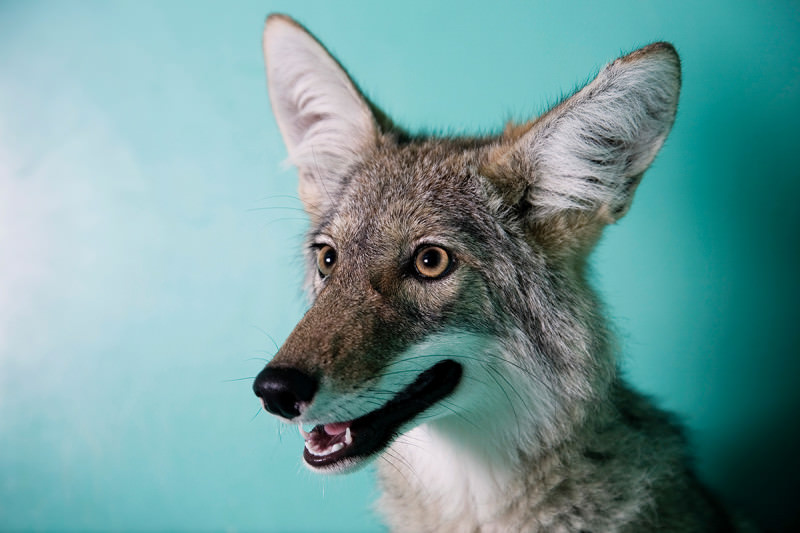Seven Nature Written Books That Captures The Spirit Of Animals
A selection of some of the best new writing, covering apes, coyotes,
fish, birds and bees, shows that the lives of animals, caged or wild,
can captivate us.
2.
Seeley is also a world-renowned animal behaviourist, an experienced guide to a hidden world, so anyone deeply interested in natural history will ignore this mad little volume at their peril.
It is often impossible to separate how animals behave “wild” from how they behave around humans. Coyotes are a startling example. Once limited to a small range in the south-west US, they responded to eradication campaigns by expanding across all of North America and adopting their would-be nemesis’s habits to an almost ludicrous degree: coyotes have even been seen catching buses. Historian Dan Flores has fun describing how coyotes make a mockery of our attempts to put nature in order: “It turns out, the coyote really is The Dude, and The Dude absolutely abides.”
This article appeared in print under the headline “Seven of the best”
1.
IF YOU do not leave a zoo confused and conflicted… it has not done its
job,” wrote zoologist Matthew Cobb recently. By that light, the story of
11-year-old orangutan Wattana, living in Paris’s Jardin des Plantes, is
a resounding success. Philosopher Chris Herzfeld wants us to note how
primates adapt to captivity. Adopting human habits does not make them
“less ape”; on the contrary, she says, “they exhibit a fundamental trait
of hominoids: plasticity”. Even so, it is a melancholy read, full of
the loss, loneliness and make-do-and-mend (Wattana is an inveterate
knot-tier) of a captive life.
2.
Many discomforted by zoos argue that an animal is first and foremost an
organism of its own world. What it does there is what matters. From the
woods of Maine, New England, Bernd Heinrich’s unselfconscious approach
to animal behaviour reaps huge rewards. It is written to a challenging
format: chapter by chapter, he spots and solves a puzzle of bird
behaviour, one species at a time. But the whole book is a delight,
written in an unforced style rare these days.
3.
No observer of Heinrich’s stripe will be surprised by the contents of Jennifer Ackerman’s new book; but for the unobservant rest of us, there is much of interest in this defence of bird cognition. Ackerman’s winning conceit is to sidestep all that agonising malarkey over consciousness and talk about genius – broadly, defined as the ability to do well what everyone else does badly. Under Ackerman’s pen, this behaviourist approach proves both fertile and fascinating.4.
The intelligence of birds is generally acknowledged, if underestimated. Fish, however, have a harder time. Ethologist Jonathan Balcombe is their passionate advocate, assembling a gobsmacking case for intelligence, awareness, memory, emotion and complex social organisation. He reckons our prejudice stems from a presumption that the fish that stayed in the water stopped evolving when a few went ashore, a notion “completely at odds with the tireless process of evolution”.5.
The rather febrile fashion in natural history writing may occasionally be down to paucity of material. As we start to run out of bees, for example, they boom in popularity, and indefatigable enthusiasts like Thomas Seeley pop up, trying to turn us all into bee hunters. He has lists of equipment. He has advice on what to wear. He is a vigorous, chivvying nuisance and you want to hit him.Seeley is also a world-renowned animal behaviourist, an experienced guide to a hidden world, so anyone deeply interested in natural history will ignore this mad little volume at their peril.
6.
Some alien worlds hide in plain sight. There are five times as many feral dogs on Earth as there are pet hounds. People assume ferals are what results when pure-bred dogs interbreed. The authors lay into this idea with aplomb – and evidence. Far from being cast-offs, feral dogs contain the “essence of dog”, evolving to live off human waste and domesticating only to secure an even more reliable food supply. Any owner of a pure-bred will feel silly after reading this.7.
It is often impossible to separate how animals behave “wild” from how they behave around humans. Coyotes are a startling example. Once limited to a small range in the south-west US, they responded to eradication campaigns by expanding across all of North America and adopting their would-be nemesis’s habits to an almost ludicrous degree: coyotes have even been seen catching buses. Historian Dan Flores has fun describing how coyotes make a mockery of our attempts to put nature in order: “It turns out, the coyote really is The Dude, and The Dude absolutely abides.”


Comments
Post a Comment